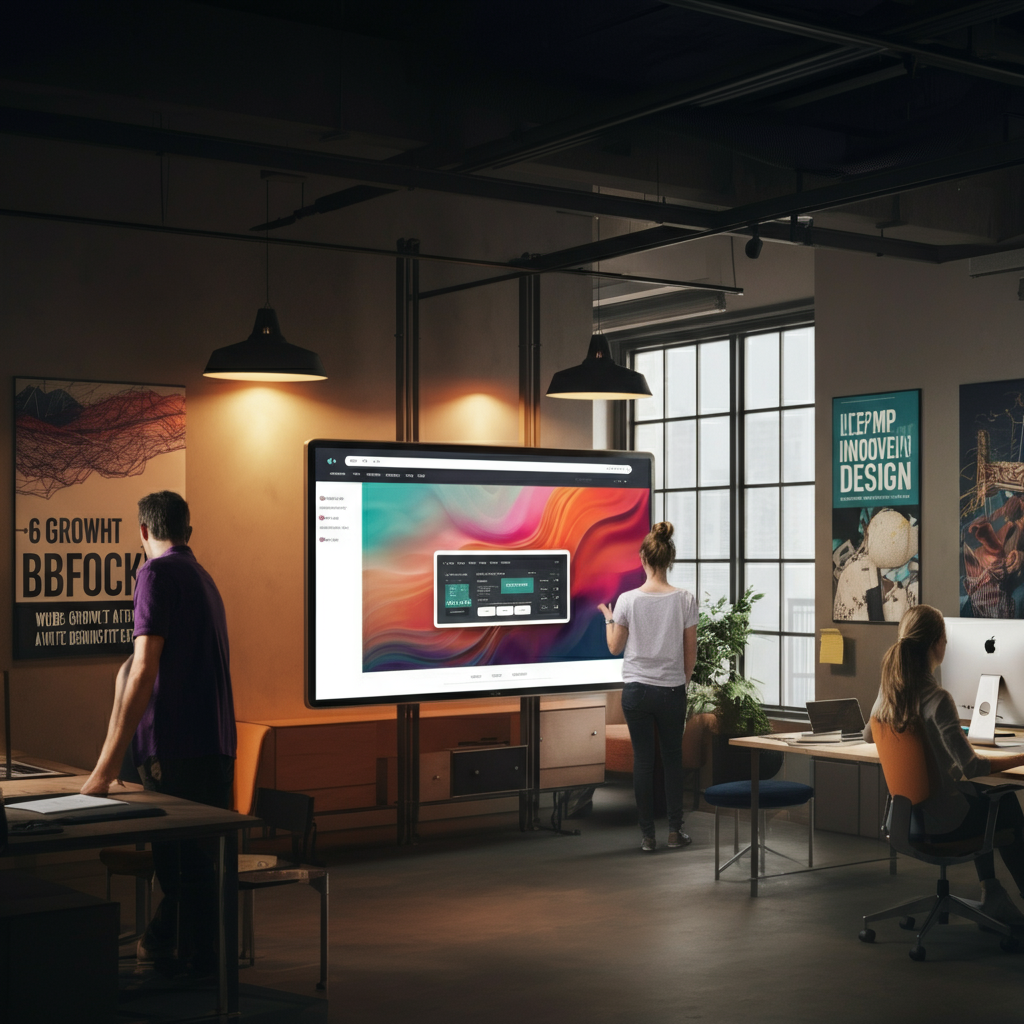When users first interact with a digital product, their initial impressions often hinge on its graphic design. Whether it’s a website, app, or online platform, the visual elements shape how users perceive and engage with the interface. A stunning design can draw users in, while poor visual choices may push them away before they even get started.
Graphic design and user experience (UX) are intrinsically linked, with one playing a vital role in defining the success of the other. While UX focuses on optimizing usability and improving user satisfaction, it’s graphic design that brings the interface to life, creating an engaging and functional experience.
Understanding this interconnection is critical for anyone involved in design, whether you’re a graphic designer, UX designer, developer, or business owner. This blog explores how graphic design enhances UX, offering actionable insights and best practices you can apply today.
Understanding User Experience Design Principles
User experience design is rooted in a set of principles that ensure a product is easy to use, accessible, and enjoyable for its intended audience. These principles influence every step of the design process and guide graphic design choices in meaningful ways.
Key UX Design Principles
- Usability – Designs should serve clear functions and be straightforward for users to interact with.
- Accessibility – Products need to cater to all users, including those with disabilities, which may involve considerations like color contrast or alt text for images.
- User-Centered Design – Every design decision should reflect the needs, preferences, and expectations of the user.
- Consistency – Maintaining visual and functional consistency across a product ensures a seamless experience.
- Feedback – Giving visual or auditory cues helps users know their actions are registering (e.g., button clicks).
- Simplicity – Avoid unnecessary elements, focusing only on what adds value to the user.
Graphic Design’s Role in UX Principles
Graphic designers help translate these principles into tangible visuals. For example, a well-designed interface will use color, typography, and spacing to ensure buttons and navigation are intuitive. Consider how graphic design can make navigation feel effortless, reducing user frustration and improving satisfaction.

The Importance of Visual Design in UX
Visual design does more than just make a product look good. It dramatically shapes user perception, creates emotional connections, and builds trust in your brand or platform. Here’s how:
How Graphic Design Influences User Perception
- Memorable First Impressions – Humans process visuals much faster than text, so strong branding and cohesive visuals capture attention instantly.
- Establishing Trust – Professional and polished design assures users that the platform or service is reliable.
- Fostering Emotional Connections – Through strategic use of color and imagery, visual design can evoke specific emotions, establishing a deeper connection with the user.
Engagement and Retention Through Visual Design
Brands with consistent and high-quality visual design often report higher engagement and retention rates. Think of platforms like Airbnb or Slack, where every element—from color choice to layout—is designed to delight the user while maintaining simplicity and clarity.
Graphic Design Impact on Usability
Usability is the backbone of a great digital product, and good graphic design plays a major role in making products intuitive.
Key Usability Factors in Graphic Design
- Color Contrast – High contrast ensures text is easy to read, even in varying light conditions.
- Typography – Readable fonts, appropriate text size, and clear spacing prevent user fatigue.
- Iconography – Icons should be easily recognizable and matched with their intended function.
- Spacing and Layout – Clear spacing prevents clutter and guides user attention to key elements.
Example
Imagine a call-to-action (CTA) button. A poorly designed button with low contrast and a vague label may confuse users, leading to higher bounce rates. A well-designed button with clear color contrast, appropriate size, and attention-grabbing text fosters action instead.
The Relationship Between UX and UI Design
UX and UI (User Interface) design are often confused, but their differences and overlaps are worth clarifying. UX focuses on the overall experience, ensuring usability and satisfaction, while UI deals with the interface’s look and feel. Graphic design functions as the bridge between the two.
Collaboration Between Graphic Designers and UX Designers
To create products that are functional and beautiful, collaboration between UX and graphic design teams is essential. UX designers handle the structure and logic of the interface, while graphic designers refine the visuals to make the experience seamless and engaging.
For example, designing an e-commerce app requires UX designers to map out the customer’s flow, while graphic designers ensure the interface is visually appealing and consistent.
Key Graphic Design Best Practices for UX
To create effective graphic designs that enhance UX, incorporate the following best practices:
- Visual Hierarchy
Use size, color, and placement to direct attention to key elements. For example, headlines should stand out more than body text.
- Maintain Consistent Branding
Stick to consistent fonts, colors, and imagery to make navigation intuitive and reinforce brand identity.
- Responsive Design
Ensure visuals adapt well across devices, providing a cohesive experience whether on desktop, mobile, or tablet.
- Consider Accessibility
Optimize designs for users with disabilities, ensuring inclusivity (e.g., designing for color blindness).
Role of Color and Typography in User Experience
The Psychology of Color
Colors can evoke specific emotions and behaviors. For instance:
- Blue instills trust and calmness.
- Red captures attention and urgency.
- Yellow conveys cheerfulness.
Picking the right color palette for your product can greatly impact how users perceive and interact with it.
Typography’s Impact
Typography affects readability and the overall tone of your design. For example, serif fonts like Times New Roman feel traditional, while sans-serif fonts like Arial or Roboto are modern and clean.
Brand Examples
Spotify’s vibrant green logo and bold typography create a sense of modernity and energy, resonating perfectly with its youthful, music-loving audience.

Enhancing Website Experience Through Graphic Design
Specific graphic design elements improve website user experiences:
- Images and Icons – Use high-quality visuals that align with your message.
- Buttons – Design clear and actionable buttons.
- Animations – Subtle animations can add a layer of delight without being overwhelming.
Balancing Aesthetics and Functionality
Effective designs find the sweet spot where visuals feel pleasing without compromising usability.
Measuring the Impact of Graphic Design on UX
To ensure your designs are performing well:
- Conduct user testing to gather feedback.
- Use heatmaps to see where users focus their attention.
- Monitor engagement metrics like click-through rates and session duration.
These insights can guide future design improvements.
Elevate Your UX With Meaningful Design
Graphic design is far more than just making a product “look good.” It’s a powerful tool that shapes usability, builds trust, and defines the overall user experience. By combining UX principles with thoughtful visual design, businesses can create engaging, functional, and user-friendly interfaces.
Whether you’re a designer, developer, or business owner, prioritizing graphic design in your UX strategy is essential for driving user satisfaction and achieving your business goals. Start evaluating your website or app today, or collaborate with a professional to refine your designs and ensure lasting impact.





